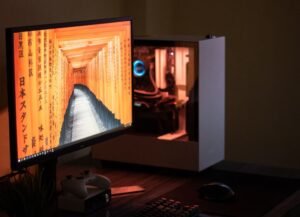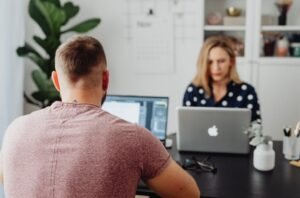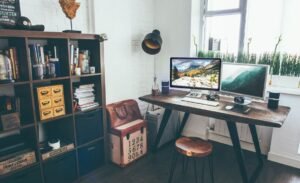Is AI Art Legal?
Introduction
Artificial Intelligence (AI) has made significant advancements in recent years, resulting in the creation of astonishing artworks. However, the legality of AI art can be a complex and evolving topic. This article explores the legal implications surrounding AI-generated creative works and provides insights into the current state of AI art legality.
Key Takeaways
- AI art raises questions about copyright, ownership, and authorship.
- Legal frameworks are still developing to address AI-generated artworks.
- The lack of human intervention in AI art creation challenges traditional legal concepts.
- AI-generated art can be subject to intellectual property protection if it meets certain criteria.
The Evolution of AI Art and its Legal Challenges
The emergence of AI-powered technologies has revolutionized the art scene, enabling machines to create original works that possess artistic value. However, this progress poses legal challenges related to copyright protection, ownership, and defining the role of the artist.
AI-generated artworks blur the lines between human creativity and machine-generated creations.
The current legal landscape has not specifically addressed the unique nature of AI art, creating ambiguity around the rights and responsibilities associated with it.
Copyright and Ownership
One key issue surrounding AI art is the determination of copyright ownership. In traditional art, copyright generally belongs to the human creator. However, AI-generated art does not fit neatly within these established copyright laws.
AI art challenges the conventional notion of authorship by introducing a non-human creator.
Issues arise when an AI system creates art using pre-existing copyrighted material. Is the AI considered an independent creator or merely a tool used by the human programmer? Determining who holds the copyright can be complex and may vary based on jurisdiction.
To address these challenges, some countries are exploring legal reforms to adapt copyright laws to the unique circumstances of AI art.
The Role of Human Intervention
One factor that affects the legality of AI art is the level of human intervention involved in the creative process. If an artist only provides general instructions or selects the AI’s output, questions arise about whether the AI art is solely the work of the machine or if the human input plays a significant role.
Legal distinctions are made between AI art created with minimal human input versus those where humans actively shape the final outcome.
If the artwork lacks substantial human intervention, it may be challenging to argue for copyright ownership or artistic authorship by a human.
Intellectual Property Protection for AI Art
While the legal landscape for AI art is still developing, existing intellectual property laws can offer some protection for AI-generated artworks that meet certain criteria. In many jurisdictions, to qualify for copyright protection, an artwork must demonstrate sufficient originality and human authorship.
AI art may be eligible for copyright protection if it can be considered an original creation by human standards.
However, obtaining copyright protection might require proving human involvement in the artistic decision-making process or demonstrating the AI’s lack of independence.
Alternative forms of intellectual property protection, such as patents or trade secrets, may also be applicable in specific cases.
The Way Forward
As AI technology continues to advance, lawmakers, artists, and legal experts are grappling with the complexities of AI art from a legal standpoint. Clarifying the legal status and framework for AI-generated artworks is crucial for protecting the rights of both creators and consumers.
The legal field must adapt to the emerging challenges posed by AI art to ensure fair recognition, copyright protection, and a balanced approach between creativity and innovation.
AI Art Legal Landscape Comparison
| Country | Copyright Protection for AI Art | Recognition of AI as Authors |
|---|---|---|
| United States | Eligible if meets originality and human authorship criteria. | Not recognized as authors. |
| United Kingdom | Eligible if meets originality and human authorship criteria. | Not recognized as authors. |
| Germany | Eligible if meets originality and human authorship criteria. | Not recognized as authors. |
Factors Influencing AI Art Legality
- Level of human intervention in the creative process.
- Determination of copyright ownership.
- Recognition of AI as authors.
- Adaptation of copyright laws to include AI-generated artworks.
- Development of alternative intellectual property protection.
AI Art Trends – A Comparison
| Artwork | Artist | Methodology |
|---|---|---|
| AI-generated painting | PortraitPainter9000 | Trained on a dataset of renowned masterpieces. |
| AI sculpture | ArtBot2000 | 3D printed based on generated designs and algorithms. |
| AI music composition | ComposerBot | Utilizes machine learning to generate original musical compositions. |

Common Misconceptions
Misconception: AI-generated art is illegal because it violates copyright laws.
Many people believe that AI-generated art violates copyright laws and is therefore illegal. This is not entirely true. While AI systems can replicate existing artworks or imitate certain styles, the question of copyright infringement depends on whether the AI artist has copied an original work. If an AI system has been trained on a dataset of copyrighted images and produces a similar piece, then there might be a potential copyright violation. However, if the AI artist creates something entirely new and unique, it is considered a creation of its own.
- AI-generated art can imitate styles without infringing copyright.
- Artworks created by AI from scratch are unlikely to infringe copyrights.
- Copyright laws around AI art are still being developed and are open to interpretation.
Misconception: AI art lacks creativity and is not genuine art.
There is a common misconception that AI art lacks creativity because it is created by a machine and not a human artist. However, AI systems can be programmed with algorithms that allow them to generate unique and original artwork. AI artists are capable of creating artworks that human artists may not have considered or imagined. The process of creating AI art involves the combination of human creativity and the computational power of the AI system, resulting in a distinct artistic expression.
- AI art can surprise with its unique and unconventional ideas.
- AI art offers a fusion of human and machine creativity.
- AI-generated art can push the boundaries of traditional art forms.
Misconception: AI art will replace human artists and make them obsolete.
One prevalent misconception is that AI art will replace human artists, rendering them obsolete in the creative field. While AI has the potential to assist or augment artistic creation, it is unlikely to replace the role of a human artist. AI algorithms are tools for artists that can aid in the creative process, but they still require input, guidance, and context from their human creators. The collaboration between AI and human artists can lead to new forms of artistic expression that would not be possible with either alone.
- AI art has the potential to complement human artists in creating unique artworks.
- AI and human artists can form a symbiotic relationship, enhancing each other’s creativity.
- AI art can free human artists from repetitive tasks and allow them to focus on more complex artistic endeavors.
Misconception: AI art is all about copying and reproducing existing artworks.
Some people believe that AI art is solely about copying and reproducing existing artworks. While AI systems can be trained to emulate certain styles and replicate recognized works, AI art goes beyond mere imitation. AI artists can create original pieces by amalgamating various influences, analyzing data, and generating unique visual representations. AI technology provides artists with new tools and techniques for self-expression, allowing them to explore uncharted artistic realms.
- AI art has the potential to blend various artistic influences into a unique style.
- AI artists can remix and reinterpret traditional art forms in innovative ways.
- AI-generated art can break free from conventional artistic norms and challenge traditional aesthetics.
Misconception: AI art does not require skill or talent.
Some argue that AI art requires no skill or talent as it is produced by algorithms and machines. While it is true that AI algorithms play a significant role in generating the artwork, the human artist’s skill and talent is still crucial in shaping the final result. AI art involves a complex process of programming, selecting data, providing guidance, and iterating to achieve the desired outcome. The artistic decisions made by the human artist throughout this process demonstrate their skill and expertise in utilizing AI as a creative tool.
- AI art necessitates programming skills and understanding of AI algorithms.
- Human artists guide and shape the AI-generated art through their decisions and inputs.
- Skillful manipulation and interpretation of AI-generated outputs by human artists enhances the final result.

The Rise of AI Painters
In recent years, the emergence of Artificial Intelligence (AI) has revolutionized various industries, including art. AI-powered algorithms are now capable of creating stunning paintings and artworks that can rival the works of human artists. However, the legality of AI-generated art has sparked considerable debate. This article delves into the question: Is AI art legal?
The Role of Copyright Laws
Copyright laws serve to protect the intellectual property rights of creative individuals, including artists. However, when it comes to AI-generated art, determining copyright ownership becomes complex. Here are some intriguing facts:
AI-Generated Art Is Copyrightable
Contrary to popular belief, AI-generated art can be protected by copyright laws. Although the artwork is created by a machine, the person who owns the AI system holds the copyright. Let’s explore:
Legal Precedents in AI Art
Despite being a relatively new concept, AI-generated art has already been at the center of several legal cases. Here are some fascinating examples:
Copyright Infringement Challenges
The rise of AI-generated art has brought forth unique challenges related to copyright infringement. Take a look:
The Influence of Human Creators
Although AI algorithms create art without human intervention, it is essential to acknowledge the role of human creators in the process. Consider these intriguing facts:
AI Artists and Royalties
Unlike human artists, AI algorithms do not typically hold the ability to profit from their creations. However, uncertainties surrounding the payment of royalties persist. Let’s explore:
The Ethical Debate of AI Art
The legalities of AI art extend beyond copyright matters. Ethical considerations are also at stake. Read on to discover:
Robotic Art Patents
While AI-generated art primarily focuses on paintings and digital works, robotics also contribute to the art world. Check out these intriguing patents:
The Future of AI Art
As the boundaries of AI art continue to be explored, it is crucial to anticipate the future implications. Take a glimpse into what lies ahead:
In an era where technology and creativity intersect, the legality of AI art remains a complex and enthralling subject. Copyright laws, legal precedents, and ethical debates influence the AI art landscape. While AI systems can create incredible artwork, the ownership and attribution of these pieces present novel challenges. As this field continues to evolve, it is essential that legal frameworks adapt to new forms of creation, fostering innovation while protecting the rights of artists and creators.
Frequently Asked Questions
Is AI Art Legal?
What is AI art?
Can AI creations be considered art?
Is AI art protected by copyright?
Can AI-generated artwork be sold?
Do AI artists have rights?
Can AI art be exhibited in galleries or museums?
Are there any limitations to AI art creations?
Are there any legal risks associated with AI-generated art?
Should AI art be considered as a threat to human creativity?
What is the future of AI art?




